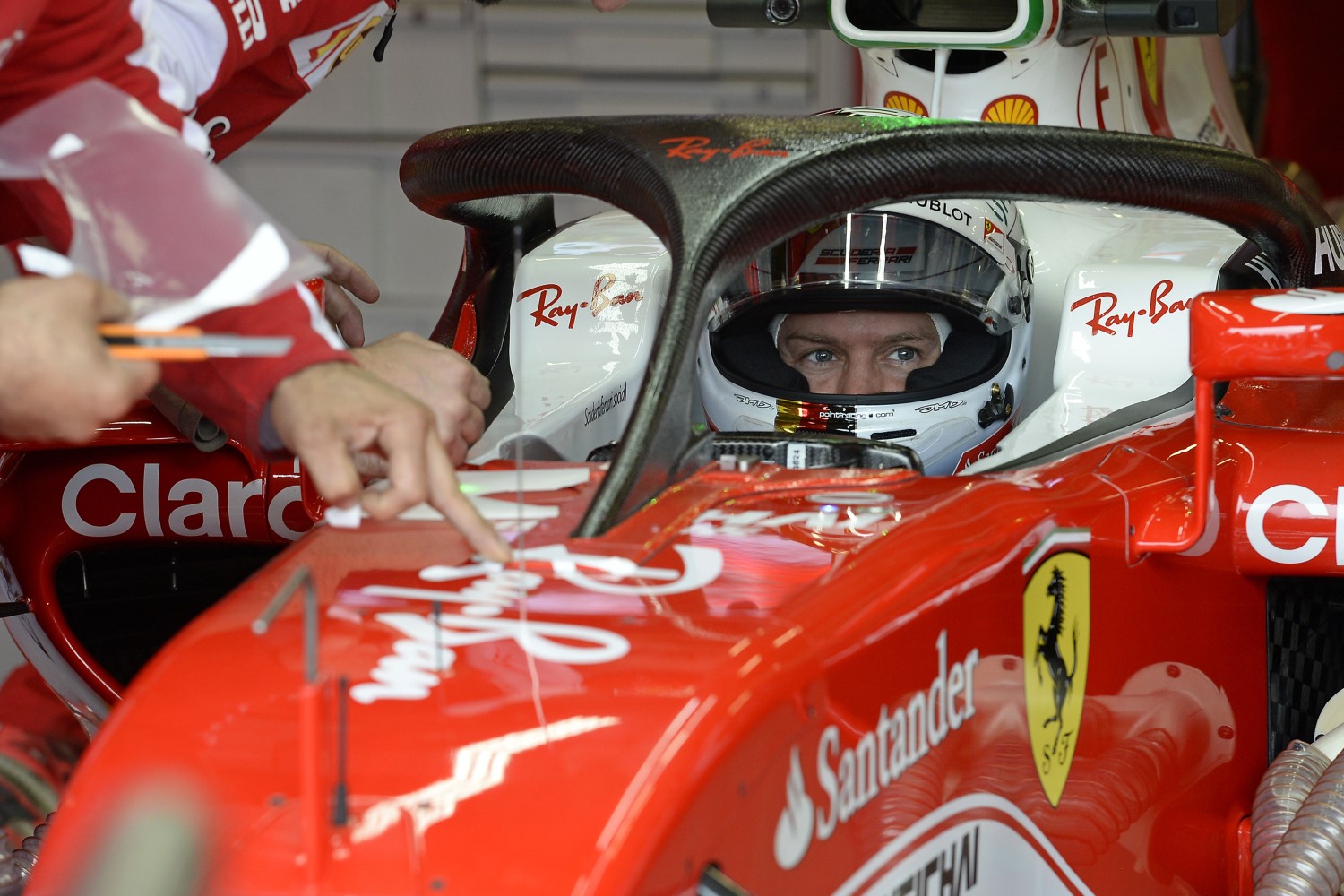Halo, canopy discussion renewed as IndyCar comes to Iowa
 |
| Vettel tested the latest Ferrari Halo at Silverstone today and said afterwards "Not great, quite a bit of an impact in terms of visibility" |
Every time the Verizon IndyCar Series makes a trip to an oval, inevitably there's a renewed discussion on safety and the danger drivers are put in with the high speeds reached on ovals. Headed into the Iowa Corn 300 at Iowa Speedway, that has proved true again writes Jeremiah Davis of the Gazette.
And after wrecks like Josef Newgarden's at Texas Motor Speedway last month — which broke his hand and clavicle — the continued discussion focuses on the potential implementation of some type of halo or canopy on the open-cockpit racecars.
IndyCar has been researching and monitoring the work being done by Formula 1 on a halo system, and is taking a patient approach. IndyCar drivers and team owners generally agree that's where the sport is headed, but want to see it done the right way.
"I think if all of the issues that arise from implementing something like that are dealt with, I don't think anyone is against the idea, fundamentally," said 2013 Iowa Corn 250 winner James Hinchcliffe. "Some of the F1 guys saying, 'Oh, but it doesn't look as cool,' is actually the most insane thing I've ever heard in my entire life.
"I don't think anyone is against the philosophy. It's just making sure things like pitting, extraction — all those issues that came up from putting that on the car are dealt with and we're solving more problems than we're creating, I think you'll have unanimous support across the paddock."
Every driver asked said it's easy to quick-react when incidents happen. After Justin Wilson's death at Pocono last year, the call for a halo or canopy reached a fever pitch.
But while the thought process isn't wrong, multiple drivers said, just throwing something on the car as it exists now without proper research and development could do more harm than good.
IndyCar President of Competition Jay Frye told Racer.com in January that there's much debate among people the series has talked to about whether or not they should retrofit something to the current chassis design, or wait for a new one.
"Right now, a lot of what is being worked on is how we can do it to the existing car," Frye told Racer.com "We're looking at scenarios, and that is one of them. If we went that way, what are our options, what are the costs, who are the manufacturers? And then the other one would be if we did do something with a different car or newer car, what would the process be the same? You obviously could do different things to it at that point because you could design around it from scratch.
"It's a very debatable topic. If you talk to one person, they think it's a great idea to do something with the car we have today; talk to another person and they says it's best to do it with a new car, and that takes time."
 |
| The next generation IndyCar should have a canopy (with A/C and fire suppression), wide tires, big underbody tunnels and almost no wings |
 |
"Our heads are exposed and we're doing 220 mph at some of these ovals. It comes with the territory," Hunter-Reay said. "We have to be sure if we add something it's not compromised in a crash like Josef's. Maybe something like a halo, but on the banked ovals, we actually look up, so we couldn't do one exactly like Formula 1's for that reason."
When the halo/canopy discussion first got off the ground, there was a sizable group who decried the move as going against the history and tradition of open wheel racing. The "nothing between me and God but the sky" argument passed down by old school racers was picked up on social media and used as a defense for open wheel cars remaining open cockpit. Even Newgarden, who was the latest to be affected by an open-cockpit wreck, acknowledged he has some of those feelings.
But safety trumps tradition, and even drivers who lament a change from that old guard perspective know it isn't sustainable — the same way open-faced helmets went away, containment seats and head-and-neck restraint devices were implemented.
The speed and strain on drivers at tracks like Iowa Speedway, Auto Club Speedway, Texas Motor Speedway and Indianapolis Motor Speedway — and with that the dangers of debris entering the cockpit — make the discussion not only important but necessary.
"Part of me doesn't want to have it because it kind of goes against the history of IndyCar, but at the same time, I'm all about innovation in the sport. I like the fact that we're innovators in IndyCar," Newgarden said. "I think it's natural to create a halo-type device or windscreen or canopy-type device for the car. That's a natural evolution and it's going to have to happen. It should. It just has to happen the right way. We can't force it. We have to find the right solution. When it's the right time and we've found the right thing, we should do it."
The Iowa Corn 300 is set for Sunday at 4:30 p.m. Jeremiah Davis/The Gazette
